Arranging a vegan backpacking, solid foods will definitely be one your needs on your backpacking trip. If you have an average mile of 8+ for each day, you will likely be consuming somewhere close to 2,500-4,500 calories. This implies that you will need a lot of high-calorie meal to prop you up and an assortment of vegan backpacking food ideas to keep you healthy.
Of course, this is problematic for backpackers who are trying to achieve an ultra-light load, who do not have the accommodation of refrigeration, and who have access to only small cooking gear. Getting the right meal only turns out to be more difficult when you cling to a vegan diet. However, do not be alarmed by those that believe that serious backpacking is not possible as a vegan.
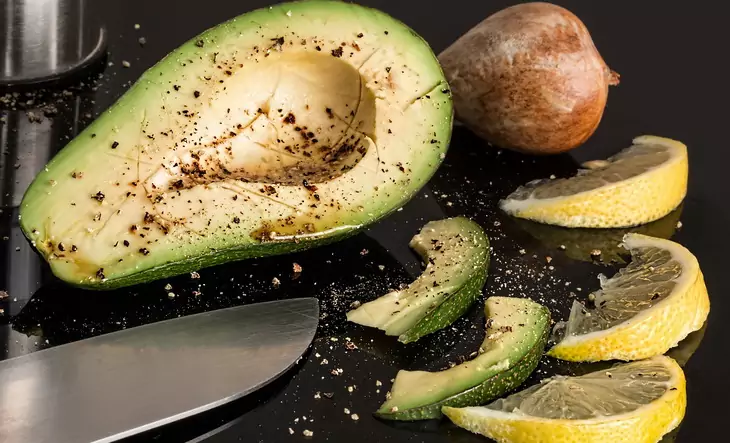
While maybe more complex, a vegan diet is actually possible to keep up with a little planning. In this article, we are going to take you through some great backpacking foods and relevant tips that can help you maintain your vegan diet. So read on and learn!
Top Lists of Vegan Backpacking Foods
Contingent upon preferences and needs, backpacking foods will vary from one backpacker to another. But here are some of the top list of vegan backpacking meals good for you:
- GORP: An amazing backpacker’s snack, GORP (meaning Good Ole Raisins and Peanuts) is quite always vegan-friendly. Obviously, we suggest you improve the original recipe; don’t just stick to only peanuts and raisins. Almonds, seeds, dried fruits, and pretzels make great increments. You can create your own personal GORP snack (possibly the least costly choice), buy some pre-made at any nearby grocery market, or buy it wholly from Amazon. Try to avoid blends with chocolate confections—these are usually made with milk products.
- Instant Rice, Cous Cous, Quinoa and Pasta: Numerous backpacker staples are really vegan-friendly as long as you don’t season them with dairy products. These backpacking meals are all incredible food ideas that need only a pot and hot water. The majority of backpackers utilize ramen noodles and forget the flavoring bundles (which are not vegan and not healthy). You can supplement any of the above grains with sun-dried tomatoes, dehydrated beans, soy sauce, dried peas or an assortment of flavors. To keep your backpack as light as would be prudent, remove stuff from bulky bundling and put them in named zip lock baggies.
- Homemade Fruit Leather: During your hiking trip, you likely won’t have any desire to drag around the heavy fruits you often eat. However, this does not imply that you need to abandon the sweetest snack of nature; rather, transform your most loved fruits into fruit leather form. By creating this snack by yourself at home, you will save cash and be able to utilize less sugar and more fruits in your mixture. Most varieties will last for about a month.
- Peanut Butter: This vegan meal is a vegan’s closest companion on the hike. For any backpacker, it’s difficult to get sufficient calories, protein, and fat to maintain your energy. This is particularly true for veggie lovers. Only two teaspoons of JIF Peanut Butter; features 190 calories, 7 grams of protein and 16 grams of fat. You can include peanut butter to any snacks or simply consume it alone by the spoonful.
- Pro bars or CLIF bars: Protein bars or power bars are supplied by a bunch of brands and have varying nutritional values, ingredients, and substance. However, they are not all vegan—many of them contain whey (a byproduct of cheese creation) or dairy. However, at a majority of grocery stores, you will likewise discover a large number of veggie options on the racks, including some prominent brands you may not have noticed before! For example, CLIF bars contain 20g of protein and does not contain a single dairy product. Pro Bar is another great vegan choice, which is GMO-free, plant-based and organic. They have a tendency to have the most natural elements and pack a considerable measure of calories based on their size.
- Dried Meals: Dried meals by outdoor herbivore are tasty and healthy substitutes for sodium-stuffed dried meals that are common among boondocks trekkers. While somewhat costly, dried meals are really worth it as the casual meal treats for lengthy hikes. They arrive in both cold and hot assortments and just need only water to make it ready for consumption. All items are vegetarian, and majority of them are vegan. Some of them are even without gluten!
- Pre-Pouched Indian Meals: Thought, it might sound uncommon, you can easily consume Indian foods right on the trail. These backpacking meals are accessible in store by brands like Tasty Bite, Swad, Kitchens of India, Trader Joes and MTR. Of cause, not all assortments are vegan, so try to check out the label for certainty. A few pros of these India meals are that they are already prepared, contains high fat and protein substance, and fantastically delicious. However, at the range of 10 ounces or more, you won’t have any desire to carry much of it.
- Dehydrated Veggies: It is easy to dry out your own vegetables if you have meal dehydrator. You can rehydrate and pack your vegetable on the trail. Vegetables give a natural blend of minerals and vitamins and in addition with a vitality boost that you will cherish. Broccoli, kale, carrots, cabbage, peppers, and celery are all great for getting dried out—simply ensure that you chop them into little pieces beforehand.
- Instant Oatmeal: This backpacking meal is one of the most straightforward breakfast meals to consume while on the trail and it is usually vegan if you create it with water. It is possible for you to include flavor this healthy meal just by including cinnamon, or toss in a few raisins and nuts to “meat” it up.
- Chickpea Quinoa Burgers: Do you feel like halting for the night to get a real outdoors style meal? If yes, you can’t turn out badly with vegan chickpea quinoa burgers. They require a tad bit of planning time and you presumably would prefer not to bring them on only a basic day hike, yet they are incredible for overnight stays. One preferred standpoint of being a vegan is that you don’t need to stress over ruined meat! So, regardless of to what extent you are out on the hike, you can guarantee yourself that these small puppies are still great eats.
- Extra Boosts: Nutritional Yeast and Olive Oil: While these two products are not something you will consume by the spoonful, they are great items that hikers should have on hand, especially vegans, as added substances. Nutritional yeast includes fiber, protein, and vitamins to your food, while olive oil will add flavor and fat.
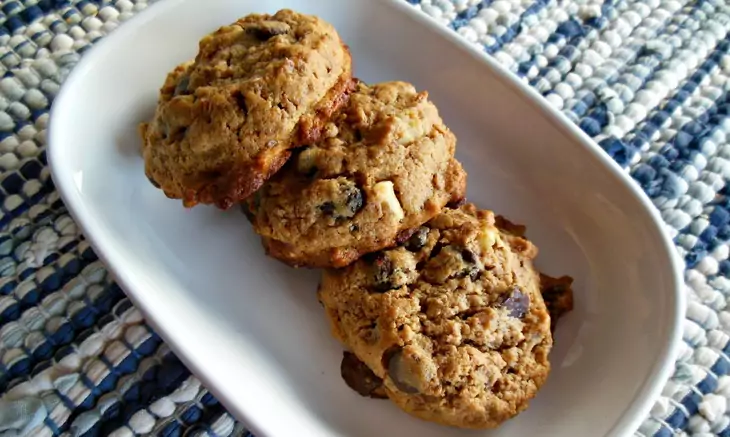
Tips on Planning Vegan Backpacking Foods
For a successful backpacking on vegan foods, a measure of things must be put into considerations and plans. Few tips below:
- Plan it out: Count the number of snacks, breakfasts, lunches, and dinners you will require for the backpacking trip. This is necessary to ensure that you have the entire foods that will prop you up throughout the day. In case you are in for a truly long outing, it’s great to have some additional food if an emergency occurs. Furthermore, it is always important to stuff more chocolate items, than you will require; more often than not it is for yourself, but on the other hand, it’s a good bartering gear with your kindred campers!
- Buy early and stock up: The majority of dehydrated foods have a long lifespan of usability as may be, dried without the utilization of flawed, added substances. That is due to the fact that expelling water by drying is a type of preservation; in general, you can buy dehydrated foods a year prior to your backpacking trip.
- Number your calories: This is actually the only period checking your calories is truly prescribed, just to make sure that you have sufficient food vitality for an entire day of exertion. For instance, natural ramen noodles for a supper is good, yet they aren’t very calorie-fill, so you can balance that with loads of seeds and nut butter. Make sure that you are getting complex starches (from whole nuts, seeds, grains) and basic carbohydrate from fresh and dried fruits.
- Look out for the ingredients: You need to check out the sodium content. Is sodium subordinates or salt recorded in the first couple of ingredients? Search for those that incorporate an assortment of recognizable grains, herbs, vegetables, and flavors. Else, you may fear meal time on your outing.
- Bring fresh foods: Who tells you that you need to consume all dehydrated meals while on the hike? Contingent upon to what extent your outing is, fresh fruit and veggies can go far to make you feel much healthy along the hiking trails. The best are veggies and fruits that are tough and can resist room temperature for quite a long time. Apples, celery, carrots and chime pepper can serve you truly well in warm climbs and in frosty trails for no less than three days. They may get a bit banged up, yet nothing beats a crisp apple when the weather is hot.
- Pick healthily dehydrated and fast foods: There are huge amounts of dehydrated meals available, many produced particularly for backpacking, yet often these are costly, produced with gross fixings, and not that calorie-filled. Fabulous meals make an awesome line of dried out meals that you would prefer to take along on the hike. You may even opt to make it yourself, so check out our article on how to easily dehydrate food for backpacking.
- Snack astutely: Picking healthy snacks on the hike is quite essential to keep your vitality up and also keep your body fit as a fiddle. Snacks like dehydrated fruits, homemade trail mix, natural energy bars and bread are incredible, and it’s great to offset fats, protein, and fiber in your snacks in order to keep your glucose level relentless between eating periods.
- Look for the packaging: When it comes to packaging, the majority of commercial camp brands, often use cook-in-bag strategy. These heavy bags are intended for pouring in bubbling water and eating right from the pack. These foods can be massive, heavy and hard to pack. See our popular article on freezer bag cooking to give you more options to prepare your food.
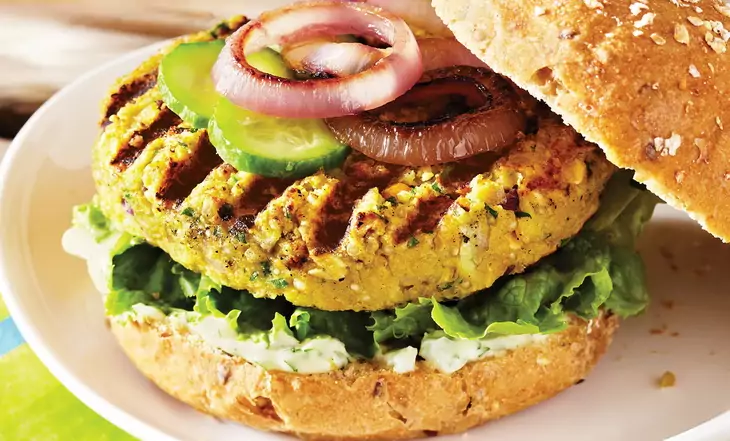
Nutritional Composition of Backpacking Vegan Foods
It is, however, expedient to know how vegan foods can play a massive role in terms of nourishment by knowing how much their nutritional values are. We have six kinds of nutrient, which are carbohydrate, protein, fat, minerals, vitamins and water. Out of these kinds of nutrients, it is only the first three (i.e. carbohydrate, protein, and fat) that supply calories as energy for the body system.
Carbohydrates
Carbohydrates are very important with regards to backpacking (or any kind of endurance event). What makes carbohydrate calories to be very important? It is due to the fact that the main purpose of carbohydrate is to supply energy that the body needs.
Carbohydrates transform into glucose for prompt energy supply and the excess is kept as glycogen for future need of energy. When the stores of glycogen are filled, the rest of the calories are changed over into fat. The sort of carbohydrate consumed is simple and complex. This is likewise essential.
Simple Carbohydrates
The simple carbohydrates give a snappy burst of vitality. Carbohydrates derived from simple sugars are likewise essential, yet retain man-made sugars (normally found in vitamin drinks and energy bars) to a base in order to prevent energy crashes and spikes that will make you lethargic.

Here are important ways you can consume simple sugars:
- Consuming fructose (gotten from the natural kind of fruit sugar) is fine due to the fact that the body properly and gradually transforms natural fruit sugars for the purpose of energy. Other than fruits, other awesome choices of natural sugars incorporate brown rice syrup, date sugar or crumbles, maple sugar (granules are good for backpacking), honey and unsulfured molasses.
- Fructose gotten from dehydrated fruits and not corn. Fruits, for example, raisins are amazing to pack out and give around 100 calories for each ounce. Dehydrated bananas are great and likewise dates. The ones we don’t suggest here are berries and this is because they do not have many calories. Many people do enjoy the taste of dried fruits better than refrigerated fruits. Refrigerated dried fruits are airy and crispy, while dehydrated fruits are pliable and chewy. Attempt them both and choose which you like most.
- Natural sugars to search for or pack out in energy bars/meals incorporate brown rice syrup, date sugar or crumbles, maple sugar (granules are good for backpacking), honey and unsulfured molasses. Powdered honey works extraordinary for backpacking, yet is clearly not vegan.
- Reduce man-made refined sugar. A superior choice when it comes to a refined sugar is the kind of sugar sourced or dissipated from sugar cane (keep in mind: not beets, which are usually genetically modified).
- Keep away from artificial sugars. These artificial sugars are normally low calorie and don’t break down properly in the body. Their short and long term risks are likewise sketchy.
Complex Carbohydrates
Complex carbohydrates give sustained vitality. Backpackers need to concentrate mostly on complex carbohydrates. Carbohydrates gotten from starches are vital, but search for the ones that aren’t highly processed.
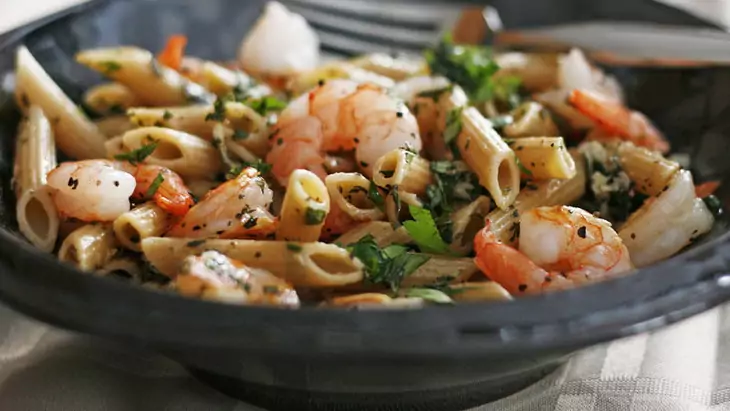
Ramen noodles are very common among backpackers since it is promptly accessible, cheap, and quick to prepare, but are full of sodium. Moreover, the noodle is profoundly processed and has low supplement content. We suggest you take fast cooking carbohydrate rich meals originating from whole grain sources.
- Whole Wheat Pasta. This is an incredible choice since it is fast to prepare (around 5 to 10 minutes). Additionally, search for pasta shapes that require less effort to stow in your knapsack, for example, elbows and penne.
- Dried Beans, Split Lentils, and Bean flakes. These give protein and carbohydrate benefits. Pick the quick cooking red split lentils. Whichever kind of lentil will require a long time to prepare.
- Instant brown rice and brown rice farina for breakfast. This meal is stuffed with nuts, fruits, and flavors and contains 500 calories for each serving. Instant brown rice dishes matched with dehydrated ingredients have unending menu conceivable outcomes.
- Musli (Oats) and Granola. Search for the ones that contain a lot of seeds, nuts and dehydrated fruits for added calories and taste. Get nut musli and fruit that has soy milk effectively blended in the oat (just include water). It contains more than 700 calories for each serving!
- Dried Quinoa. Quinoa is wheat-free, high and complete in protein. It is highly, lightweight, versatile and fast to cook. Dried Quinoa requires a 5min standard time after boiling or hot water is included. You can likewise buy the usual quinoa that hasn’t been dehydrated and pre-steamed, but rather it will need 15-20min of cooking or hydration.
Protein
Protein is required to maintain the bone, skin, muscle, hair, and some other tissues. Calories from protein shouldn’t be relied on for energy. Neglecting to take in a satisfactory amount of carbohydrates will make the body utilize protein as a source of energy, which can constrain your capacity to maintain tissue and muscle.
When it comes to protein and vegans, the fixation on protein in America is ridiculous. There is a typical misguided conception out there that we require much protein – in certainty, just 1 in 10 calories ought to originate from protein. If you consume a lot of the grains and nuts mentioned above, you will get all that anyone could need of the suggested protein.
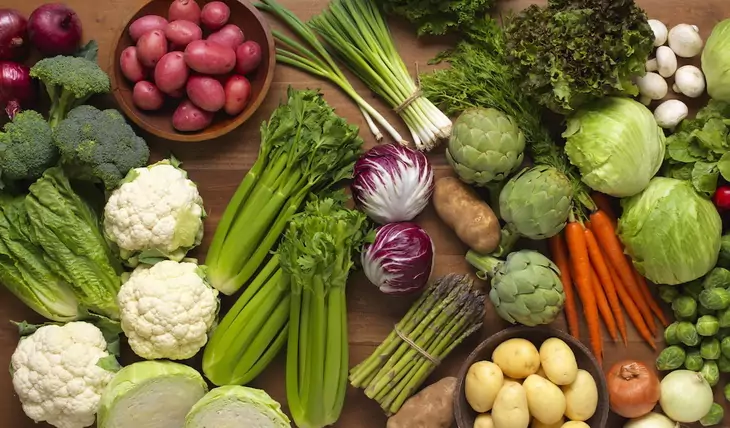
Don’t stress over the caloric proportions – simply consolidate an assortment of dried fruits and vegetables, whole grains, seeds, nuts and non-hydrogenated oils. These items will give a high measure of carbohydrates and sufficient protein and fat.
Fats
Fat constitutes more than the consolidated calories of a carbohydrate and protein, so if you require calorie density, why not simply concentrate on a proportion that is most noteworthy in fat?
Fats are essential for long haul vitality needs. Fat fills in as the capacity substance for the additional calories of the body and the body relies on burning fat calories once it already burns through carbohydrate calories. However, fat is slow to break down and does not change over into fast energy. That is the reason it is essential to have a hold of fat cells accessible instead of depending on them as fast wellsprings of energy. Fat is likewise critical for protecting and keeping the body warm during winter periods.

Hiking burns a high measure of calories. In general, you should expend from about 2,000 calories (less demanding hiking activity) to 4,500+ calories (cold weather/ difficult hiking) mountaineering. Search for snacks or meals that will provide you with 100+ calories/ounce. See our article on how hiking contributes to a healthy weight loss by clicking on the link.
Wrapping It Up
Is it really possible to backpack on Vegan Foods? This question is a typical one that most backpackers do as and we believe you have been able to get the right answer from this article. Meat eaters have this conviction that a vegan won’t have the capacity to complete their hiking trip since they can’t likely devour enough calories, fat or protein and will end up weak and debilitated.
The conviction is actually not correct. You won’t have to change your dietary limitations to finish your hiking activity. As long as you eat the correct kind of plant sources and keep up a high state of healthy calories, it is sure that you will feel more energetic than your meat-eating partners.
For more backpacking food tips and tricks, see our article on this useful topic for additional options.
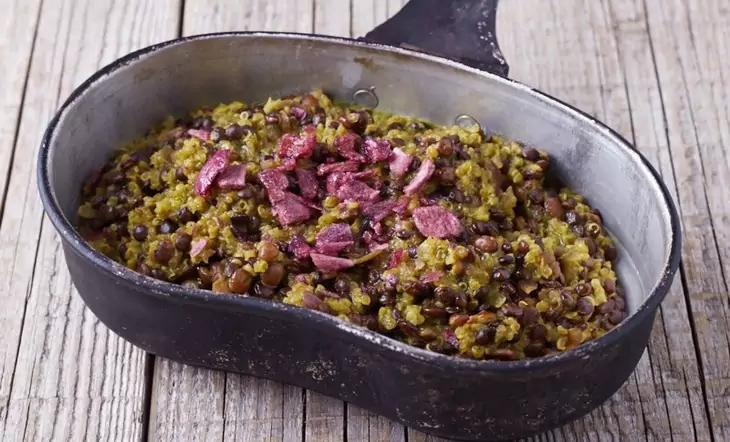
Hope you got a lot of information from this article? For further thought or suggestions, you can leave us a comment below. We’d love to hear from you!

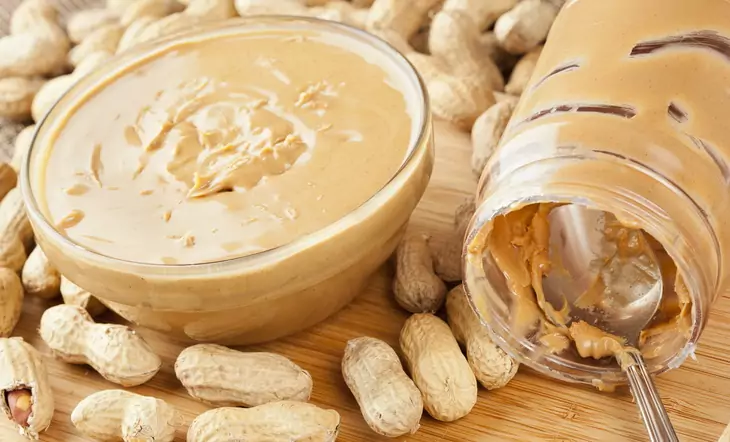


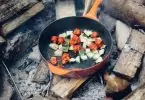
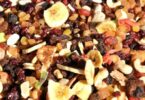
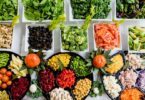

Apart from being an excellent diet for backpacking, a vegan diet may protect you against certain cancers.
You can stay vegan on a long backpacking or hiking trip. All it takes is a little creativity and planning.